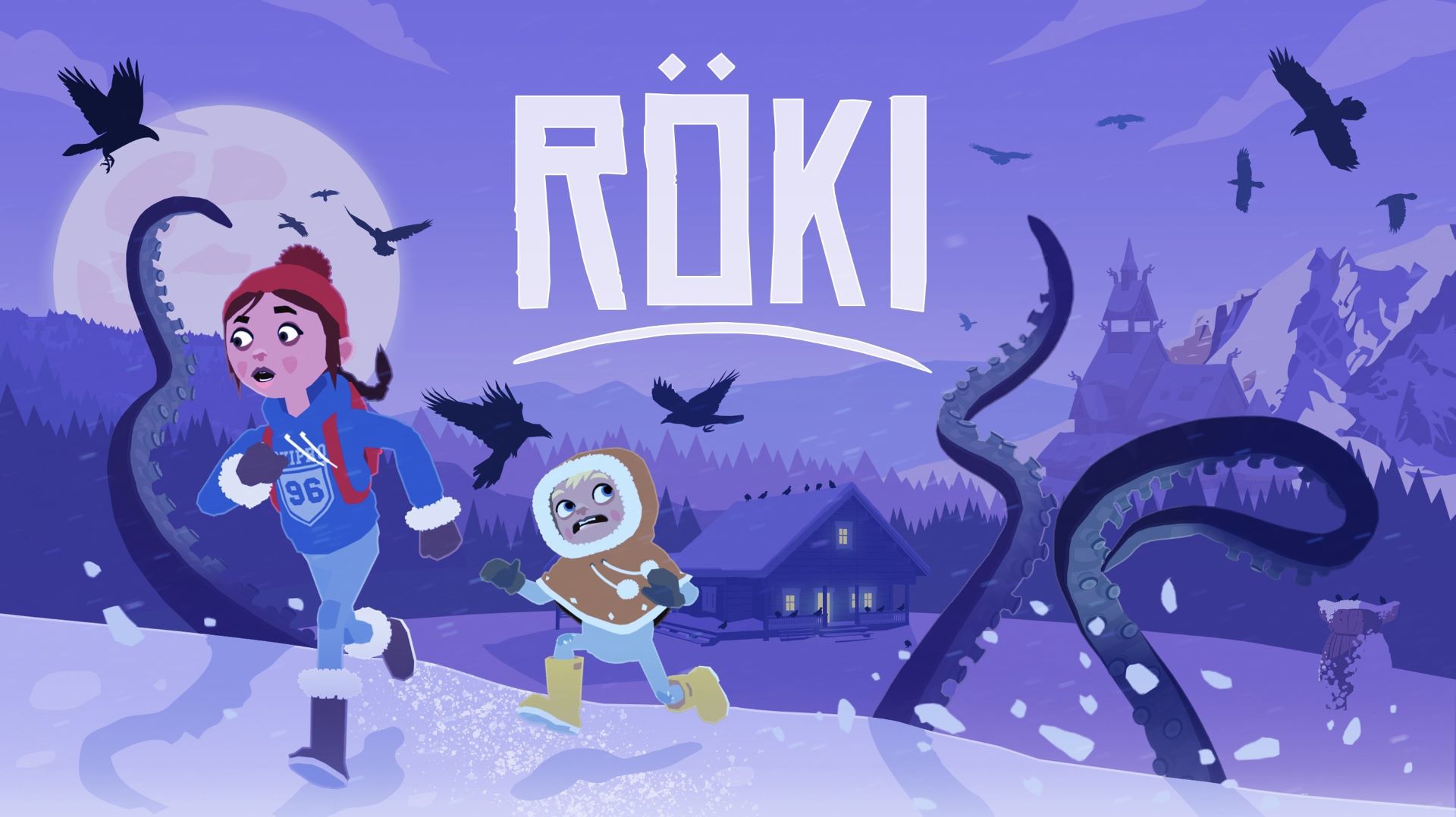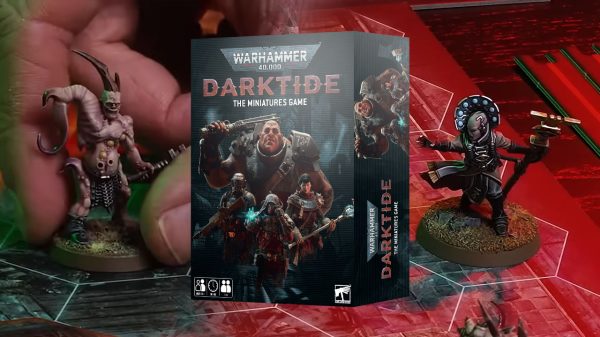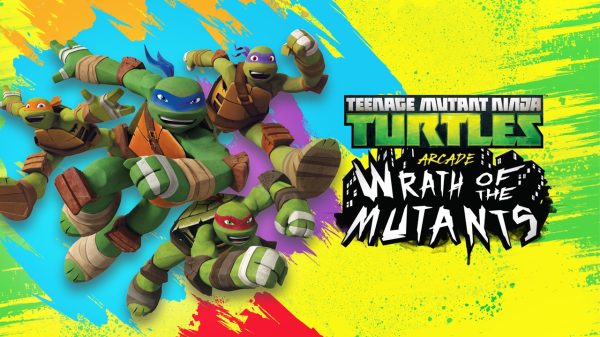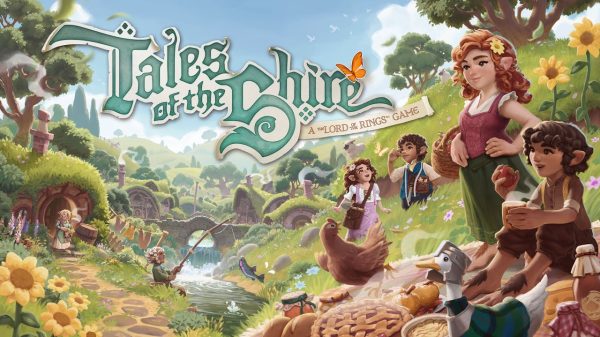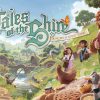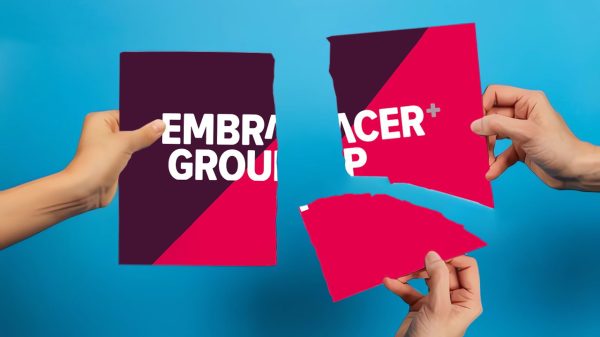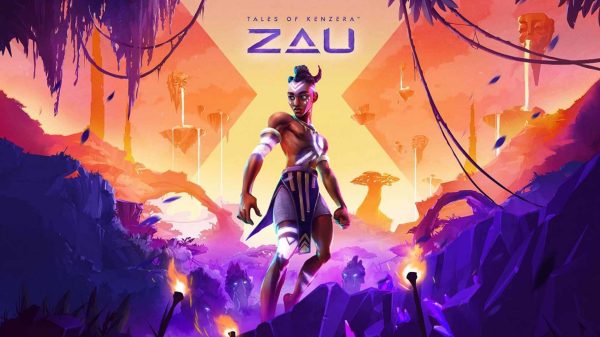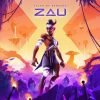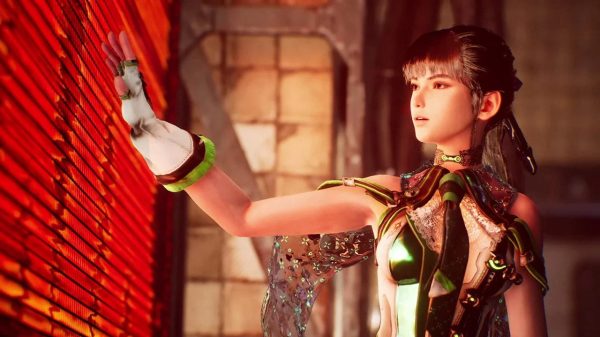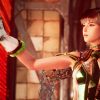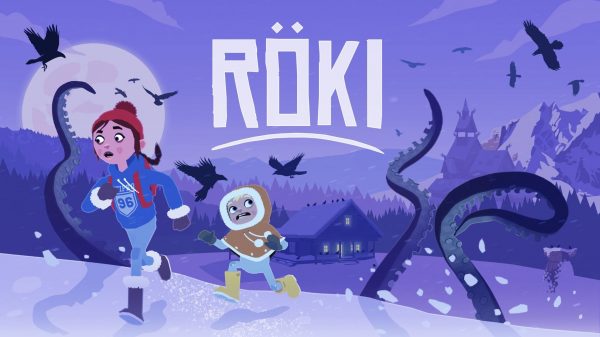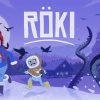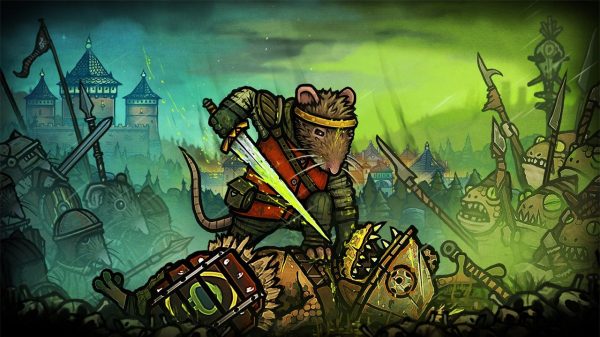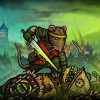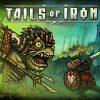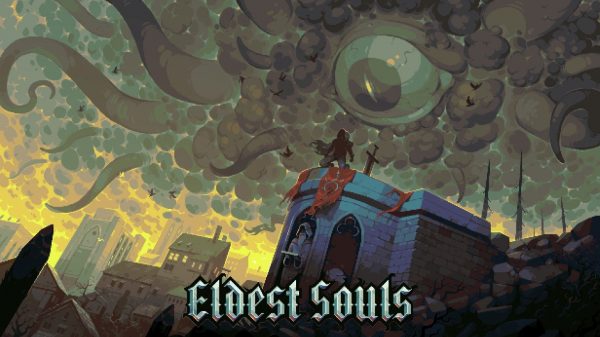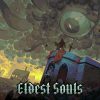When it comes to indie narrative adventure games, one of my most anticipated of the year is Röki (I named it as one the indies to watch out for in 2020), the Scandinavian folklore-inspired tale from Polygon Treehouse, who were founded by former Guerrilla Games devs Alex Kanaris-Sotiriou and Tom Jones. My enthusiasm was further enhanced after going hands-on with the brief demo that was available on Steam for a short time last month thanks to its gorgeous visuals and stellar approach to sound design. Over the weekend during the 2020 PC Gaming Show, Röki’s PC version received a July 23 release date, with the Switch version to hit the eShop at a later date. Recently I was able to sit down with Alex Kanaris-Sotiriou and Tom Jones and chat about the game’s Scandinavian inspiration, as well as the visual and audio approach to the dark contemporary fairy tale.
WellPlayed: Thanks for taking the time to chat with us about Röki – give us the game’s elevator pitch.
Polygon Treehouse: Röki is a modern explore-o-puzzle adventure game inspired by Scandinavian folklore. You play as Tove, a young girl journeying into the ancient wilderness to rescue her brother from Röki, a mysterious and misunderstood monster.
WP: The game’s premise gives off Pan’s Labyrinth vibes. What are some of the game’s narrative and conceptual influences?
PT: That’s a good starting point! The collision of the fantastical and the real is something that really interests us and is prevalent in many of the films of our childhood, like Labyrinth, Return to Oz and The Neverending Story. These films, although clearly created for children, weren’t afraid to tackle big issues or to terrify their audience.
The Moomins are also another key influence (our hero is named after Tove Jannson). The story of the Groke, a creature who froze everything (and everyone) they approached but longed for a friend, in particular really struck a chord. The idea of a misunderstood monster is one of the foundation stones of our game.
WP: Why Scandinavian folklore?
PT: We were toying with a few different settings when we re-discovered Scandinavian folklore and lightning struck. It wasn’t the Odin, Thor etc. that excited us as you might expect but the creepy creatures from the rivers, lakes, caves and forests that captured our hearts. They were so strange and beguiling that our synapses immediately started firing and we began to assemble a cast of creatures that would form the backbone of our adventure.
WP: How long has the game’s concept been around for?
PT: We’re close to completing Röki’s development which has been a three-year journey for us. Some of that was setting up the company and finding the right publisher to collaborate with but it’s still been a sizable adventure for us all. It’s taken us around the world and we’ve been fortunate to meet with many talented developers along the way.
WP: Why did you decide to base the game’s story around two children?
PT: Children have eyes unclouded by experience or preconceptions. We really like the idea of children meeting monsters and looking past their appearance and seeing the humanity underneath. Fairy tales often have young heroes and act as cautionary tales so this was something we wanted to play with and plunge our modern-day kids into that world.
WP: Does the narrative contain any underlying themes?
PT: As well as looking past appearances to see the true character beneath, another key theme of Roki is family and loss. At the start of the adventure Tove, a young girl herself, is caring for her younger brother Lars while her father slumbers. We deliberately don’t tell the player why this is happening, but instead allow them to uncover the truth themselves, through gameplay. At various points in the game Tove will explore distorted memories to face her fears and past trauma.
That isn’t to say that the game is bleak, far from it, but we wanted to have depth and meaning to our adventure. I guess you could say that Röki is not just a story of physical adventures and monsters, but also an inner exploration of personal battles with demons.
WP: How long are you anticipating the game’s length to be?
PT: A single playthrough of Röki will take around 12-15 hours. There are lots of secrets and curiosities to be found and optional background lore to delve into, so it will vary depending on how people choose to play the game. We’ve tried to create a strong sense of place so we hope after completing the adventure we’ll be able to entice players back to the Scandinavian wilderness for another wintry visit.
WP: You signed with United Label, a brand new indie publishing firm. What convinced you that they were the right publisher for Röki?
PT: United Label approached us as collaborators first rather than publishers. Their vision for the label captured our imagination and we liked the idea of being part of their debut lineup and us embarking on our adventure together. They were also very passionate about the game, and grasped the vision of what we were trying to create.
They’ve been instrumental in forging our relationship with Nintendo and having access to their in-house QA and marketing teams have been a real boost for us.
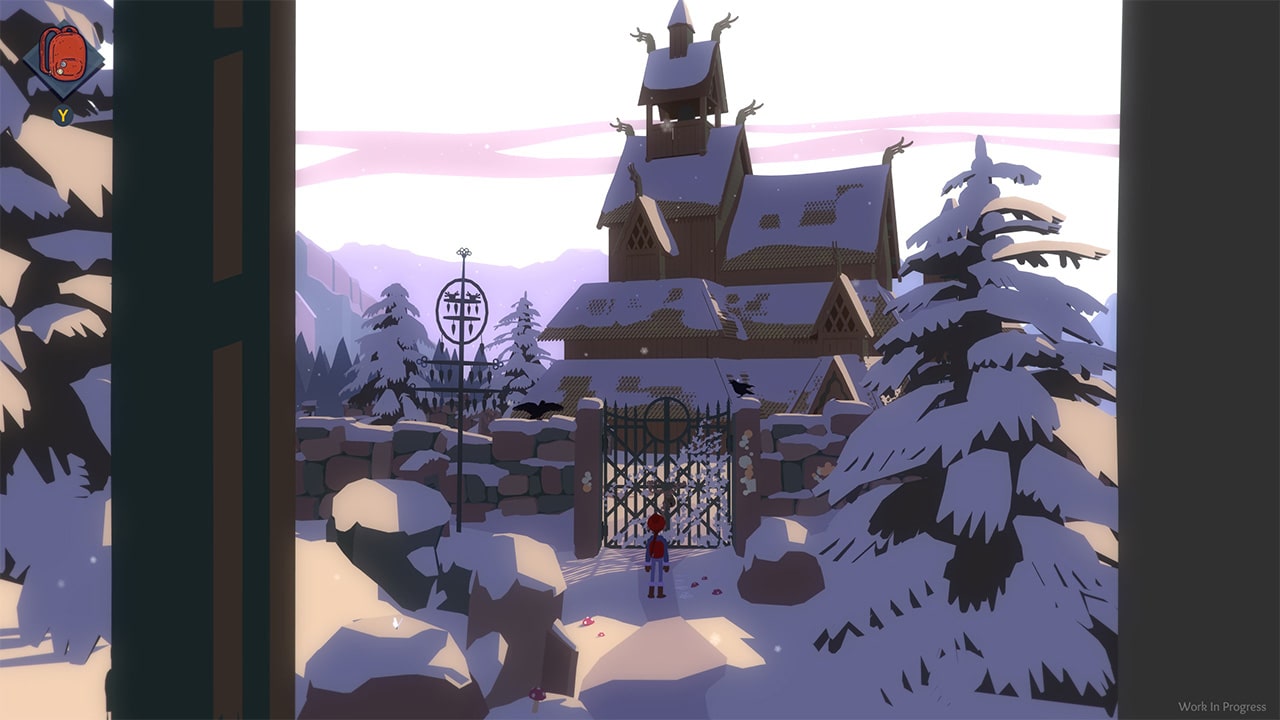
Röki features beautiful hand-drawn visuals
WP: Talk to us about the art style – the beautiful hand-drawn flat-shaded visuals look incredible. What inspired this art direction?
PT: First of all, thanks! Röki’s art direction is something that seems to really draw people into the game and make them sit up and notice what we’re trying to do.
We came at defining the game’s signature style from a number of different angles, one was a production point of view. We knew we wanted to make a big adventure but also realised we were going to be doing it with a small team. As we were quite experienced with the general 3D art production pipeline (from our time at PlayStation) we decided to see what would happen if we removed certain chunks from it as an experiment.
What we arrived at was an illustrative art style that thrives on pure shape, colour and motion. Importantly it looks different from most other 3D games, which I think is part of the reason people’s eyes have been drawn.
WP: After playing the game’s short demo, the music was certainly a highlight. In my preview I said it was similar to Sigur Ros’ “emotional gibberish.” Was it a deliberate design choice to have Tove mumble her words or simply make noises that are full of emotion?
PT: The audio was an aspect of the game we were keen to embrace fully and started work on very early in development. We knew we wanted to tell an emotional story and music and audio play a pivotal, or even critical role in delivering that punch.
On the music side we‘ve collaborated with Aether, a composer known for ambient electronic music whose work is a key element in setting the tone, mood, atmosphere and driving the emotion for the game. The fact that the music has grabbed as much attention as the visuals is a testament to his work.
On the ‘audio emotes’ side, yes it was a deliberate choice. We didn’t feel comfortable doing full VO and were worried it would slow the game down or that people would just skip it. Saying that, we also knew that having a human voice would add a great deal of personality and emotion to the game, so we wanted to find the sweet spot, and so we evolved our ‘emotion-engine’. It’s essentially a library of over 40 different flavours of emotive sound, so puzzled, disorientated, sad, frustrated and so on. We have multiple different variants of each emotion to avoid any back-to-back repetition. We then simply tag each line of dialogue with an emote token so the correct emote sound is delivered along with the line. It’s very effective and really adds a great deal of character to the game.
We’ve also used Scandinavian voice actors to perform these sounds. Even though the emotes feature few words you still glean some of their native lilt which further adds to the sense of place we’ve strived so hard to create.
WP: After working for Guerrilla Games for more than 10 years developing AAA games, how different is developing a game like Röki?
PT: People are surprised when we say that many of the underlying principles are still the same, just some of the variables have shifted. Obviously we have a much smaller team, have no physical office and we have more freedom to make whatever we want but what we’ve tried to do is to take all the learnings and experience we’ve gleaned from 14 years at PlayStation and apply them to the indie space. Creative problem solving, design process, marketing, pitching concepts; there are more transferable skills than people may initially think.
WP: Over the weekend you announced the game’s PC release date (July 23) but Switch owners have to wait a bit longer. How come you didn’t launch the game on both platforms simultaneously?
PT: The launch date and strategy is something that the label has been working on. For us the important thing is to make sure that the player gets the best version of Röki and that it’s an adventure (and world) they want to keep coming back to.
WP: So far the game has only been announced for PC and Nintendo Switch. Any chance of it coming to PS4 and Xbox One?
PT: We’re keen for as many people to enjoy the game as possible. Our focus is on PC and Switch which we think make a great home for the game, but who knows from there.
WP: Thank you for your time, good luck with the rest of the game’s development.
PT: Our pleasure, very lovely chatting and a big wave to all your readers. Stay safe.
For more information on Röki check out the Polygon Treehouse’s official website or Steam page (wishlist if you dig what you see).
Despite a childhood playing survival horrors, point and clicks and beat ’em ups, these days Zach tries to convince people that Homefront: The Revolution is a good game while pining for a sequel to The Order: 1886 and a live-action Treasure Planet film. Carlton, Burnley FC & SJ Sharks fan. Get around him on Twitter @tightinthejorts




